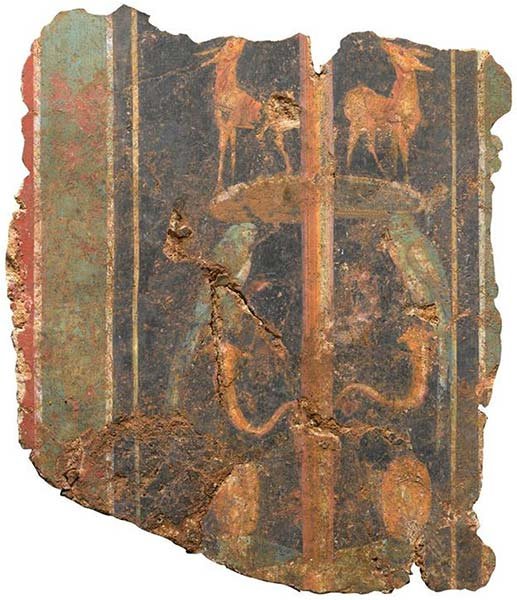Could you be standing or sitting over an ancient artifact right now? Founded in 43 C.E., London has a long and storied Roman history. Just a few days ago, a rare fresco was discovered — under 21 Lime Street, in the heart of London’s insurance district.
For over 1,000 years, Londoners have been walking — and recently, driving — over a Roman fresco that was discovered last week under 21 Lime Street. Erin Blakemore of the Smithsonian reports, “Thousands of years ago, the site was home to a different building, London’s Roman Basilica and Forum, a towering structure larger than St. Paul’s Cathedral, which served as a kind of city center and shopping mall for Londoners.
A conservator works on a section of the fresco (c) Museum of London Archaeology 2016
“The discovery of the face-down fresco hints at the way the forum and adjacent buildings were torn down. Apparently, this building was simply toppled to the ground, instead of being demolished in a more thorough manner, meaning that after the wall fell to the ground, it was simply built over. All the better for archaeologists: When they uncovered the eight-foot long and nearly five-foot high wall section, they were able to flip it over to see the ornate decoration they believe used to stand in a rich family’s reception room.”
No doubt the discovery highlights once more that so much of our ancient past remains to be discovered.
To learn more, visit the Smithsonian.
This article was featured in Fine Art Today, a weekly e-newsletter from Fine Art Connoisseur magazine. To start receiving Fine Art Today for free, click here.








